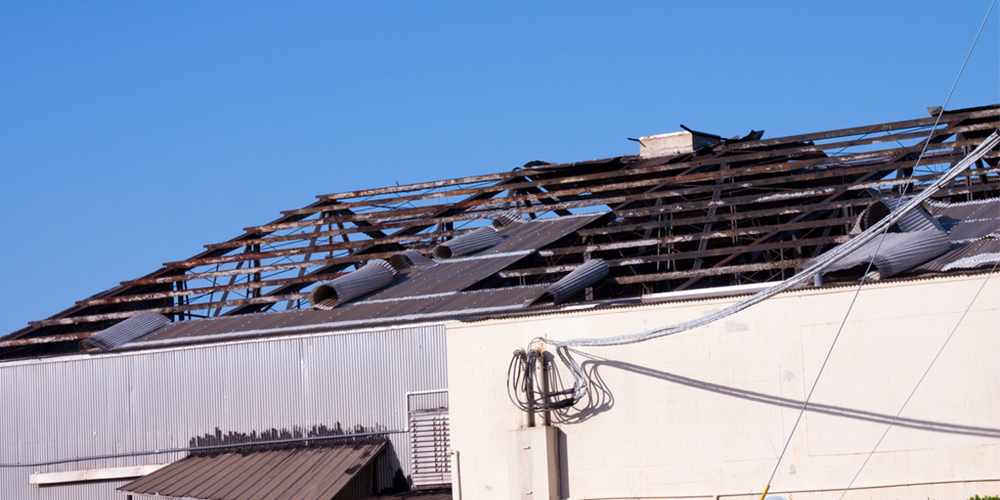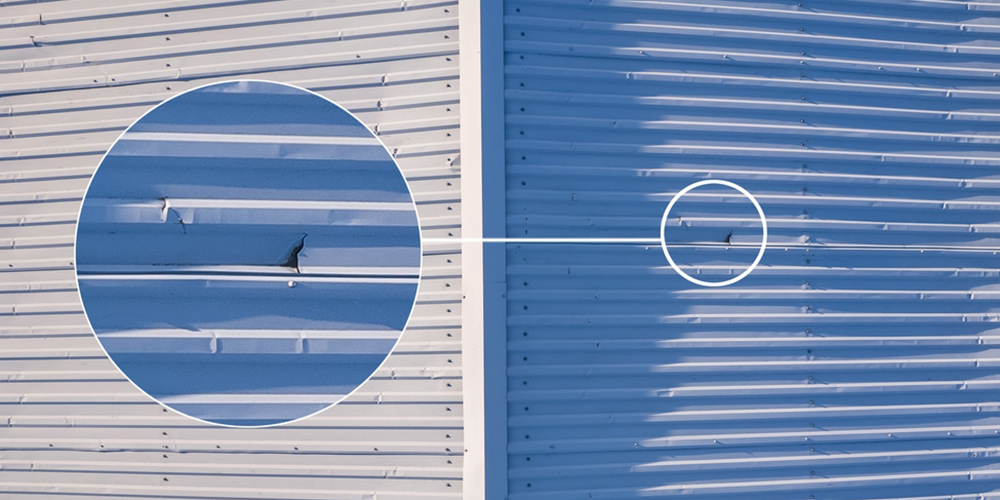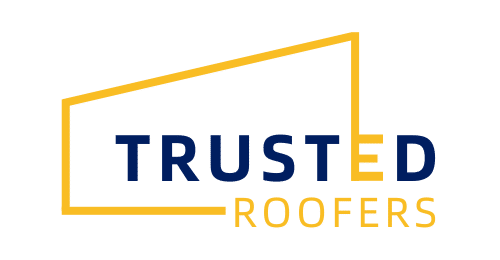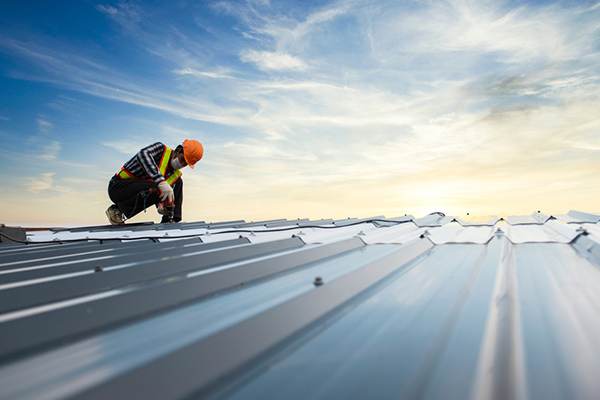Key Takeaways
- UV rays and high temperatures cause roofing materials to become brittle, leading to cracks and erosion.
- Inadequate drainage can lead to standing water, rot, and structural damage to roofs.
- Snow and ice accumulation can stress roofs, with ice dams causing leaks and potential collapse.
- Strong winds can lift roofing components, allowing water and debris to cause further damage.
- Hail can puncture and dent roofing materials, compromising their aesthetic and protective functions.
- Regular inspections and appropriate material choice for the local climate are key to extending the life and performance of commercial roofs.
Commercial roofs face a barrage of challenges from the weather, each type leaving its own mark. From the relentless beating of the sun and heat to the weighty silence of snow and ice, these elemental forces test the limits of materials like EPDM, TPO, PVC, metal roofing, and asphalt shingles. Understanding how these conditions affect roofing materials is crucial for their longevity and structural integrity.
Types of Weather Impacts
Sun and Heat
The relentless exposure of roofing materials to the sun’s ultraviolet (UV) rays and the accompanying high temperatures is a major factor in their premature deterioration. UV radiation is particularly damaging, making materials brittle and prone to cracking and erosion. These effects are compounded by high temperatures, which cause roofing materials to expand and then contract as they cool. This continuous cycle can weaken the structure of the roof, leading to potential leaks and reducing its overall lifespan.
Rain and Moisture
Water-related issues, including accumulation and improper drainage, present significant challenges to maintaining roof integrity. Standing water can easily find its way under roofing materials if not promptly removed, leading to rot, mold growth, and other moisture-related potential issues in the underlying structures. The situation is worsened by inadequate drainage systems, which can amplify the risk of water damage and compromise the structural integrity of the building, leading to expensive repairs and maintenance issues.
Snow and Ice
In regions where snowfall is common, the weight of accumulated snow can place undue stress on roofing structures. Roofs not designed to withstand such loads may experience deformation or collapse. Furthermore, ice damming—a process where melted snow refreezes at the roof’s edges—can result in water pooling. This water can seep under shingles and tiles, causing leaks and damage not just to the roof but also to the interior spaces of the building.
Wind
Strong winds pose a unique threat to commercial roofs by potentially lifting roofing components such as tiles, shingles, and even flashing. This can create openings through which water and debris can enter, leading to further damage. Continuous exposure to high winds can weaken a roof’s structural integrity over time, making it more susceptible to other forms of weather damage.

Hail
Hailstorms can inflict immediate and severe damage to commercial roofs. The impact of hail can puncture roofing materials, strip away the granular surface of asphalt shingles, dent metal roofing, and crack tiles. This damage not only affects the roof’s aesthetic but also diminishes its ability to protect the building from future weather events.
Material-Specific Vulnerabilities
EPDM and TPO Roofs
Ethylene Propylene Diene Monomer (EPDM) and Thermoplastic Polyolefin (TPO) roofing materials are favored in the commercial roofing industry for their durability and flexibility. However, these materials have their weaknesses, especially when faced with certain weather conditions. EPDM and TPO roofs are particularly vulnerable to punctures, a significant risk during storms that carry debris. Additionally, prolonged exposure to ultraviolet (UV) rays can deteriorate these materials over time, affecting their integrity and lifespan. Regular inspections are essential to identify and repair any damage early to maintain their protective functions.
PVC Roofing
Polyvinyl Chloride (PVC) roofing systems are known for their chemical resistance and are a popular choice for buildings that are exposed to oils or animal fats, such as restaurants. Despite this advantage, PVC roofs have a notable weakness in colder climates. Low temperatures can make PVC material brittle, increasing the risk of cracking. To prevent such issues, it’s critical for building owners in colder regions to consider PVC’s temperature limitations when choosing their roofing material.
Metal Roofing
Metal roofing is renowned for its longevity and resistance to a wide range of weather conditions. It’s an excellent choice for commercial buildings due to its durability and minimal maintenance requirements. However, metal roofs are not without their vulnerabilities. They can be susceptible to dents from hail, which can compromise the aesthetic appearance and potentially the surface integrity of the roof. While metal roofing systems are often designed to withstand significant weather events, it’s essential to assess any damage after severe hailstorms.
Asphalt Shingles
Asphalt shingles are less common in commercial roofing but are used in some applications due to their cost-effectiveness and ease of installation. These materials, however, face challenges in severe weather. High winds can lift or even remove shingles, exposing the roof structure to water damage. Hail can cause granule loss, reducing the shingles’ effectiveness against UV rays and shortening their expected service life. Regular maintenance and prompt repair of damaged shingles can mitigate these issues, ensuring the roof remains functional and protective.
Signs Of Damage
Identifying the signs of weather-related damage early is crucial in maintaining roof integrity. These signs include visible cracks, tears, or blistering in the roofing material, standing water on the roof surface after rain, interior water stains indicating leaks, and loose or missing roofing components after wind or hail storms.

Visible Cracks, Tears, or Blistering
The roofing material can suffer from cracks, tears, or blistering due to extreme weather conditions such as high temperatures, direct sunlight, or freezing temperatures. These physical damages are often the first indicators of weather impact. Rubber roofs might show signs of blistering due to heat, while asphalt shingles could crack under the strain of fluctuating temperatures.
Standing Water on the Roof Surface
After a rainstorm, it’s important to check for standing water on the roof surface. This can be a sign of inadequate drainage or a compromised roofing structure. Standing water is particularly concerning because it can lead to the degradation of roofing materials over time, encourage algae and moss growth, and even cause leaks if not addressed promptly.
Interior Water Stains Indicating Leaks
Interior water stains on ceilings or walls are telltale signs of roof leaks. These stains often indicate that water has penetrated the roofing material and the underlying protective layers, finding its way into the building. Leaks can be caused by various weather-related issues, such as damaged flashing, compromised seals, or the aftermath of heavy rains and snow.
Loose or Missing Roofing Components after Wind or Hail Storms
Strong winds and hail can cause immediate and noticeable damage to your commercial roof. After such events, it’s essential to inspect the roof for any loose, damaged, or missing components. Shingles, tiles, or metal panels might be dislodged or damaged by high winds, while hail can puncture or dent the roofing surface. Ensuring these components are promptly repaired or replaced is critical to maintaining the roof’s effectiveness in protecting the building.
Weatherproofing Your Investment
To mitigate weather-related risks, selecting appropriate materials, coatings, and drainage systems is essential. For high UV exposure areas, materials with UV-resistant properties or reflective coatings can reduce heat absorption and prolong the roof’s life. Properly designed drainage systems are crucial to prevent water accumulation. For regions prone to heavy snow, selecting a roofing material capable of bearing the weight and facilitating easy snow removal is important. Wind-resistant roofing materials and secure installation techniques can minimize wind damage. Lastly, considering impact-resistant materials can significantly reduce hail damage.
Conclusion
The resilience of a commercial roof against weather impacts is not solely a matter of material choice but of preparedness and maintenance. Recognizing the signs of weather-related damage and implementing preventative measures can significantly extend a roof’s lifespan and performance. By selecting appropriate materials and employing strategic weatherproofing techniques, building owners can safeguard their properties against the harsh realities of climate conditions. Ultimately, a well-maintained roof is not just an investment in a building but a cornerstone in the protection and sustainability of the business it houses.The Impact Of Weather On Your Commercial Roof
Frequently Asked Questions
How does extreme weather affect commercial roofs?
Extreme weather can cause leaks, structural damage, and accelerated aging in commercial roofs, impacting their durability and performance.
What types of weather are most damaging to commercial roofs?
Hail, heavy rain, high winds, and extreme temperatures are particularly harmful, as they can lead to punctures, moisture buildup, and material degradation.
Can regular maintenance mitigate weather-related damage?
Yes, regular inspections and maintenance can identify and address minor issues before they escalate into major problems due to weather exposure.
What are the best materials for weather-resistant commercial roofing?
Materials like EPDM, TPO, and metal are known for their resilience against harsh weather conditions, offering better protection and longevity.
How often should a commercial roof be inspected for weather damage?
It’s advisable to inspect commercial roofs biannually and after major weather events to ensure any damage is promptly repaired and to maintain roof integrity.



